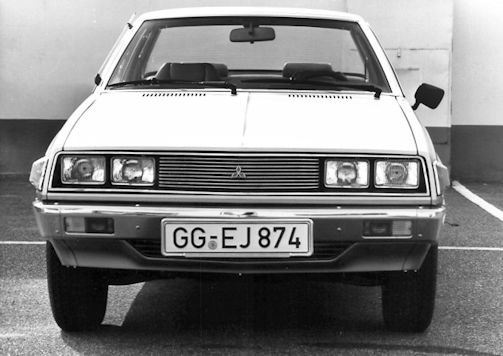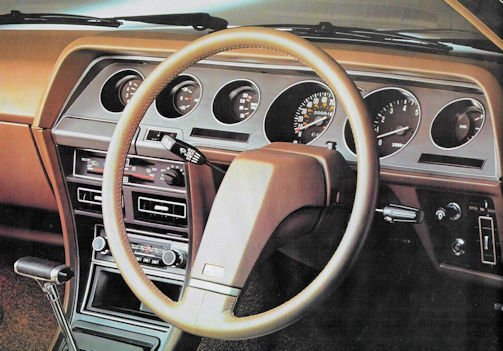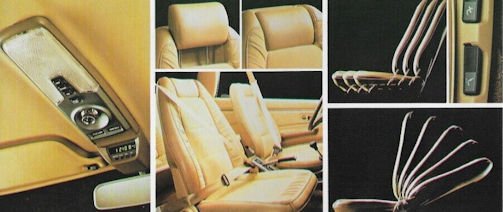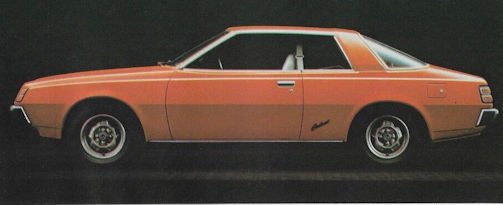Mitsubishi Sapporo 1st generation (A121 / A123)
 |
|
|
Production period: |
1975-1980 |
|
Body versions: |
Coupe |
|
Engines: |
Gasoline: 1.6-2.0 litres (55-72 kW) |
|
Length: |
4650 mm |
|
Width: |
1675 mm |
|
Height: |
1330 mm |
|
Wheelbase: |
2515 mm |
|
Curb weight: |
1165 kg |
The Mitsubishi Sapporo is a coupe, which was offered from 1975 to 1983 by Mitsubishi Motors in Europe. It was based on the Mitsubishi Galant. The name was introduced in the fall of 1975 for the coupe version of the third Galant series, which was sometimes referred to as Mitsubishi Galant Σ (Sigma). The vehicle was only sold in Europe and South America as Mitsubishi Sapporo, in most other markets was the car Mitsubishi Galant Λ (Lambda).
In addition, the car was also marketed by the Chrysler Corporation, in North America as Plymouth Sapporo and Dodge Challenger, in Australia as Chrysler Scorpion, later as Mitsubishi Scorpion. In the UK was still the name Colt Sapporo, the local import brand of Mitsubishi.
The Sapporo was in Europe from April 1978 in the "GL" version (A121) with 1.6-liter engine, as "GL / S" and "GS / R" version (A123) with 2.0-liter Engine and disc brakes available all around. Inside and out, the Sapporo is packed with a host of special features which, when added together, give the car its unique character. Aerodynamic design The Sapporo's advanced aerodynamic design, represents an ideal marriage of art with science. produce a smooth airflow which makes for great stability at high speeds and helps to give good fuel consumption. The Sapporo's Wraparound rear window is extended around to the sides — thus creating a stylish, highly individual impression. In most sporty type cars, the rear window is usually small and offers poor rearward visibility. The Sapporo's large window, by contrast, gives back seat passengers plenty of room, expands visibility and makes the whole interior brighter and much more pleasant. Rollbar shaped rear pillar The rollbar type design of the rear pillars is carried right across the roof — a feature which strongly accentuates the sportiness of the Colt Sapporo. The roof itself is made of reinforced steel for greater safety. Front air dam the air dam beneath the front bumper is a feature with which most Colts are fitted. It not only enhances the cars sporty appeal, but also gives a strong aerodynamic down-force effect for greater stability at high speeds.
The interior Front seats are slide adjustable and fully reclining. They are easily adjusted by conveniently located control levers. And the driver's seat features a special lumbar support device. Front passenger seats are fitted with a 'memory lock' slide system to give rear passengers easy access whilst allowing the front seats to return to their original pre-selected position. An ideally located lever causes the seat to slide forward under spring assistance and at the same time the backrest tilts forward.

The distinctive, overhead aircraft-type console incorporates an interior lamp, a swivelling map reading lamp and a digital clock with an hour/minute display. The Sapporo's inertia reel seat belts automatically lock when the car and/or the passengers are subjected to sudden stress. Normally, however, the belts provide free and easy movement. They are so comfortable and inconspicuous that the only time you'll notice you are wearing them is when you need them. The belts are fastened and unfastened in a quick one-touch movement and, when not in use, they retract automatically. Built-in integral head restraints the front seat head restraints can be extended for greater passenger comfort and protection. When not in use they 'click' snugly down into the front seatback to provide more open visibility from the rear seat. The front seats slide back and forth a full 160mm to provide both driver and passenger with precisely the right amount of legroom. For even greater comfort the front seats fully recline through 18 positions, and the driver's seat is equipped with an adjustable lumbar support. For greater safety the fuel tank is positioned beneath the boot floor, with the spare wheel directly above it. Because the spare tyre protrudes barely above the floor the available luggage space is maximized.

The tilt adjustable steering column is a 'minor detail' but one which has a major effect on the driver's comfort. Because the driver can easily select the steering wheel position which feels most comfortable to him this feature goes a long way towards eliminating unnecessary driving fatigue. The Colt Sapporo comes with power steering as another standard feature. Ulti-function control levers Turn indicator, light switches, headlamp flash and dip controls are all incorporated in one handy lever conveniently located on the steering column. Another lever switches in the wiper, washer and intermittent wipe functions. Headlamp interlock the headlamp circuits are interlocked with the ignition switch to prevent the possibility of leaving the headlamps on by mistake. Remove the ignition key and the headlamps are automatically extinguished.

Together with the 1.6-liter engine, there was a four-speed manual transmission. The "GL / S" version was equipped with a three-speed automatic transmission. The top model "GS / R" was delivered with a five-speed manual transmission and made with the "4G52GS" engine 108 hp. A special feature of this engine were two opposing balance shafts, improve the mass balance of the engine and thus cause a low-vibration run. The 4-cylinder unit. It requires fewer parts, realizes substantial savings in weight and therefore allows us to build a car which is much lighter than if we had to fit 6 or even 8-cylinder engines. The problem with a four has always been noise and vibration. One way to eliminate these undesirable characteristics is to add more cylinders but this has all been changed by the remarkably smooth Mitsubishi '80' engine. By devising a method of drastically reducing noise and vibration. The secret is two 'silent shafts' which rotate on either side of the crankshaft in opposite directions and at twice the crankshaft
speed. They effectively cancel out the noise and vibration caused by the vertical piston stroke as well as the rolling moment caused by the explosions within the cylinders, The dramatic result is a 4 cylinder unit offering the lightness and fuel saving economies common to a conventional four, and at the same time delivering the smoothness and quiet operation that can normally, only be achieved, with much larger 6 or 8 cylinder engines.
The 2 litre Mitsubishi '80' engine features highly economical fuel and Oil consumption. Clean burning, this smooth-running unit delivers maximum power of 67kW (90 bhp) DIN at 5,500 rev/min. in its Manual form and 63-4 kW (85 bhp) DIN in the Automatic version.Until the model change in the summer of 1980, a rigid axle with coil springs was used behind.
 .
.
Technical
-
Overall length- 4,430 (174.4)
Overall width - 1,675 (65.9)
Overall height- 1,330 (52.4)
Interior length -1.705 (67.1)
Interior width - 1,345 (53.0)
Interior height - 1,080 (42.5)Wheelbase - 2,515 (99.0)
Track front -1 ,370 (53.9)
Track rear -1,355 (53.3)-Note: Advanced Maintenance and Repair Manuals available for registered users-
Manuals
-
Mitsubishi Previous 47 / 55 Next
